The Butts, Rochdale, Lancashire, OL16 1HB
The name of this pub recalls its original use as the Regal cinema. Purpose built in 1938, the Regal was formally opened on 16 May by Mrs Mary Duckworth (Mayor of Rochdale).
Prints and text about The Regal Moon.
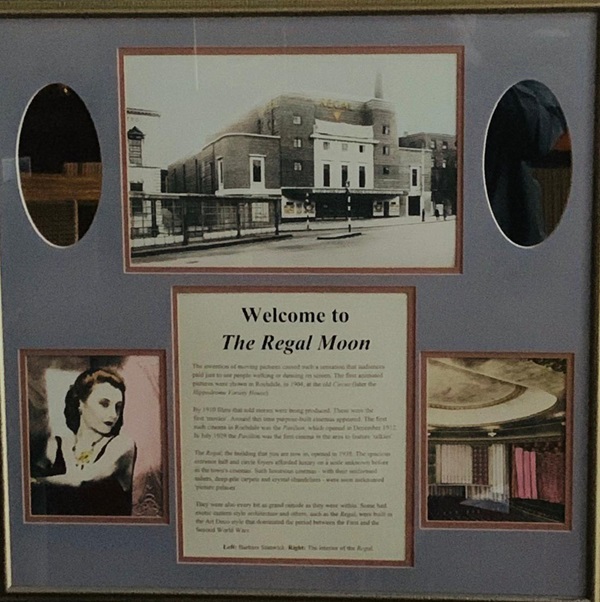
The text reads: The invention of moving pictures caused such a sensation that audiences paid just to see people walking or dancing on screen. The first animated pictures were shown in Rochdale, in 1904, at the old Circus (later the Hippodrome Variety House).
By 1910 films that told stories were being produced. These were the first ‘movies’. Around this time purpose-built cinemas appeared. The first such cinema in Rochdale was the Pavilion, which opened in December 1912. In July 1929 the Pavilion was the first cinema in the area to feature ‘talkies’.
The Regal, the building that you are now in, opened in 1938. The spacious entrance hall and circle foyers afforded luxury on a scale unknown before in the town’s cinema. Such luxurious cinemas – with their uniformed ushers, deep-pile carpets and crystal chandeliers – were soon nicknamed ‘picture palaces’.
They were also every bit as grand as grand outside as they were within. Some had exotic eastern style architecture and other, such as the Regal, were built in the Art Deco style that dominated the period between the First and the Second World Wars.
Left: Barbara Stanwick
Right: The interior of the Regal.
Photographs and text about Julie Goodyear.
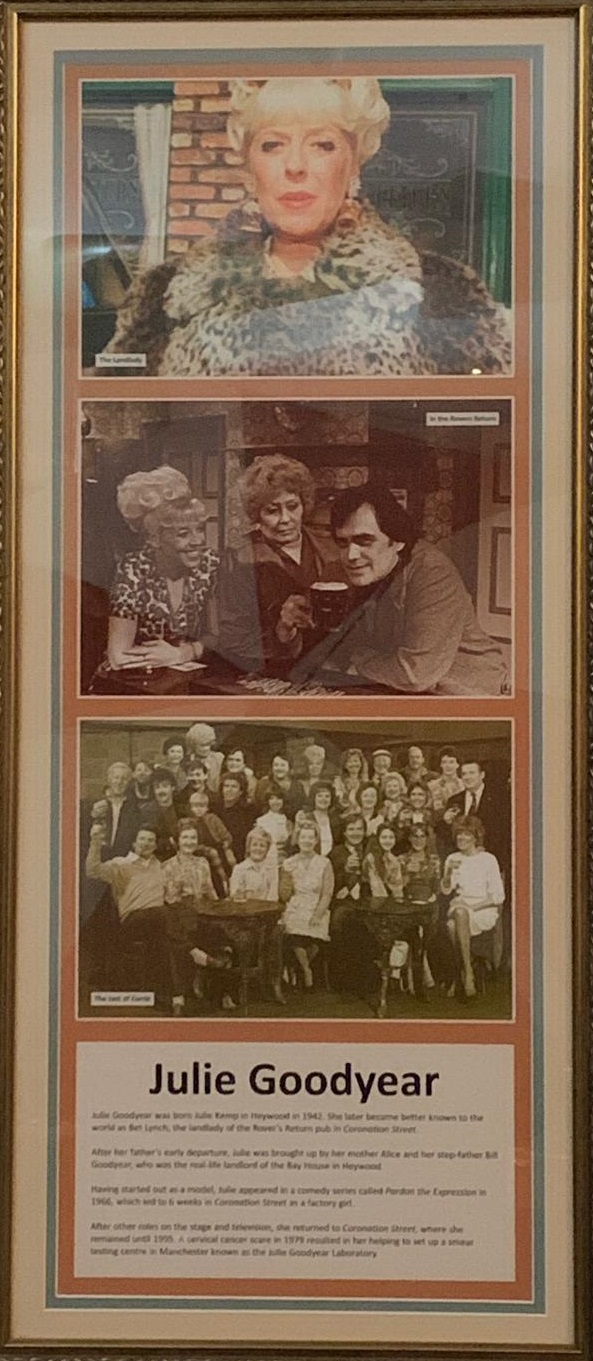
The text reads: Julie Goodyear was born Julie Kemp in Heywood in 1942. She later became better known to the world as Bet Lynch, the landlady of the Rovers Return pub in Coronation Street.
After her father’s early departure, Julie was brought up by her mother Alice and her step-farther Bill Goodyear, who was the real life landlord of the Bay House in Heywood.
Having started out as a model, Julie appeared in a comedy series called Pardon the Expression in 1966, which led to 6 weeks in Coronation Street as a factory girl.
After other roles on the stage and television, she returned to Coronation Street, where she remained until 1995. A cervical cancer scare in 1979 resulted in her helping set up a smear testing centre in Manchester known as the Julie Goodyear Laboratory.
Photographs and text about Colin Baker.
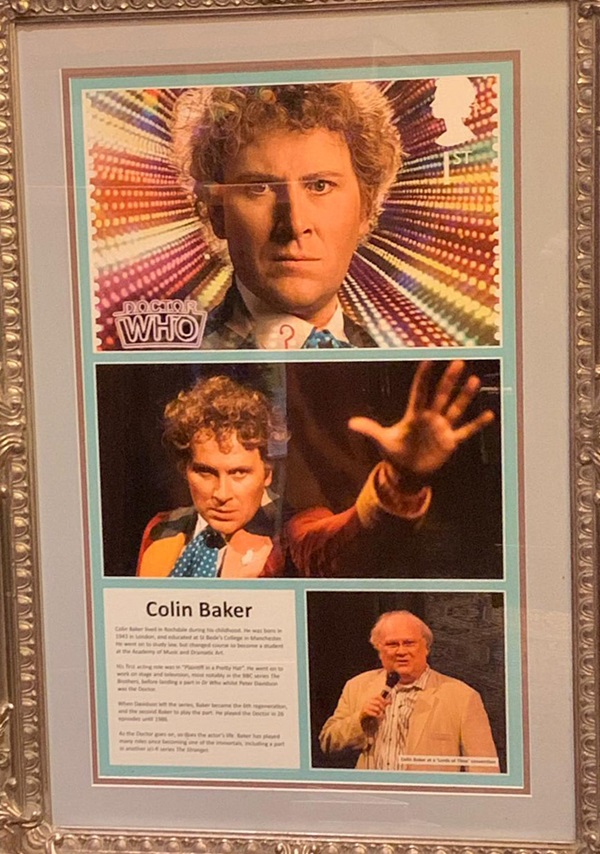
The text reads: Colin Baker lived in Rochdale during his childhood. He was born in 1943 in London, and educated at St Bede’s college in Manchester. He went on to study law, but changed course to become a student at the Academy of Music and Dramatic Art.
His first acting role was in ‘Plaintiff in a Pretty Hat’. He went on to work on stage and television, most notably in the BBC series The Brothers, before landing a part in Dr Who whilst Peter Davidson was the Doctor.
When Davidson left the series, Baker became the 6th regeneration, and the second Baker to play the part. He played the Doctor in 26 episodes until 1986.
As the Doctor goes on, so does the actor’s life. Baker has played many roles since becoming one of the immortals, including a part in another sci-fi series The Stranger.
Photographs and text about Anna Friel.
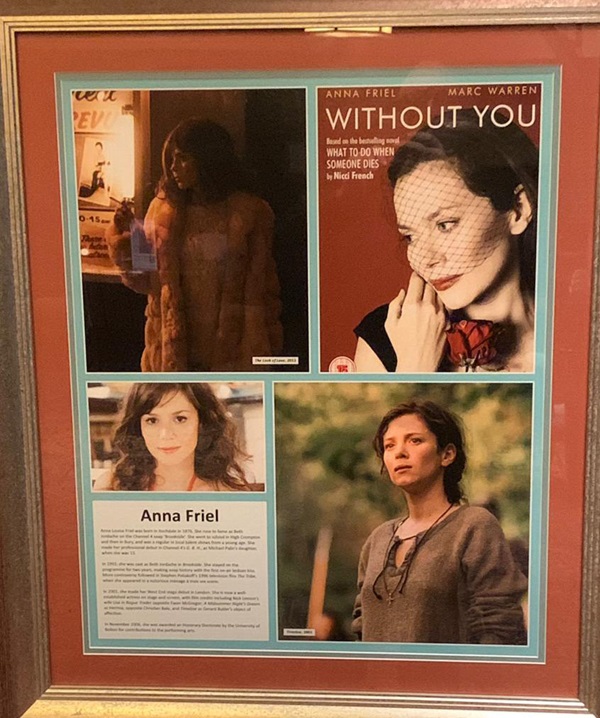
The text reads: Anna Louise Friel was born in Rochdale in 1976. She rose to fame as Beth Jordache on the Channel 4 soap Brookside. She went to school in High Crompton and then in Bury, and was a regular in local talent shows from a young age. She made her professional debut in Channel 4’s GBH, as Michael Palins daughter, when she was 13.
In 1992, she was cast as Beth Jordache in Brookside. She stayed on the programme for two years, making soap history with the first on-air lesbian kiss. More controversy followed in Stephen Poliakoffs 1996 television film The Tribe, when she appeared in a notorious ménage a trois sex scene.
In 2001, she made her West End stage debut in London. She is now a well-established actress on stage and screen, with film credits including Nick Leeson’s wife Lisa in Rogue Trader opposite Ewan McGregor; A Midsummer Night’s Dream as Hermia, opposite Christian Bale, and Timeline as Gerard Butlers object of affection.
In November 2006, she was awarded an Honorary Doctorate by the University of Bolton for contributions to the performing arts.
Photographs and text about Bill Oddie.
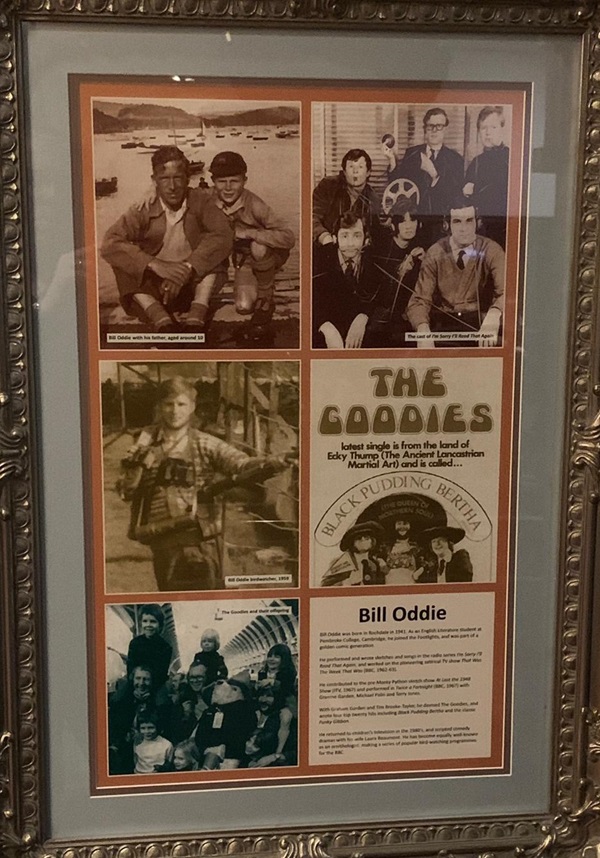
The text reads: Bill Oddie was born in Rochdale in 1941. As an English literature student at Pembroke College, Cambridge, he joined the footlights, and was part of a golden comic generation.
He performed and wrote sketches and songs in the radio series I’m Sorry I’ll Read That Again, and worked on the pioneering satirical TV show That Was the Week That Was (BBC, 1962-63).
He contributed to the pre-Monty Python sketch show At Last the 1948 Show (ITV, 1967) and performed in Twice a Fortnight (BBC, 1967) with Graeme Garden, Michael Palin and Terry Jones.
With Graham Garden and Tim Brooke-Taylor, he devised The Goodies, and wrote four top twenty hits including Black Pudding Bertha and the classic Funky Gibbon.
He returned to children’s television in the 1980’s, and scripted comedy dramas with his wife Laura Beaumont. He has become equally well known as an ornithologist, making a series of popular bird-watching programmes for the BBC.
Text about the mighty Wurlitzer.
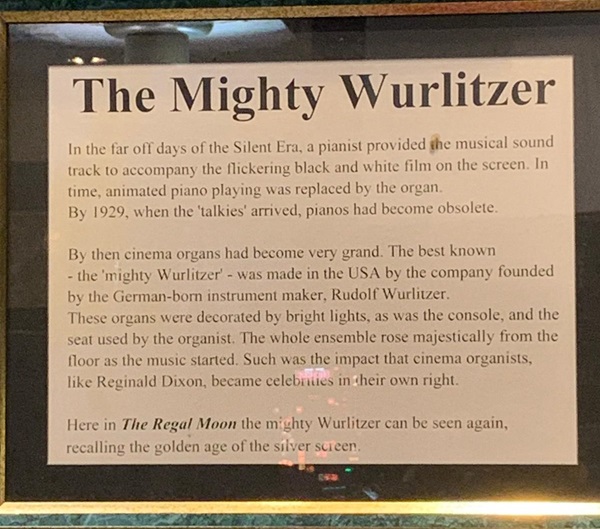
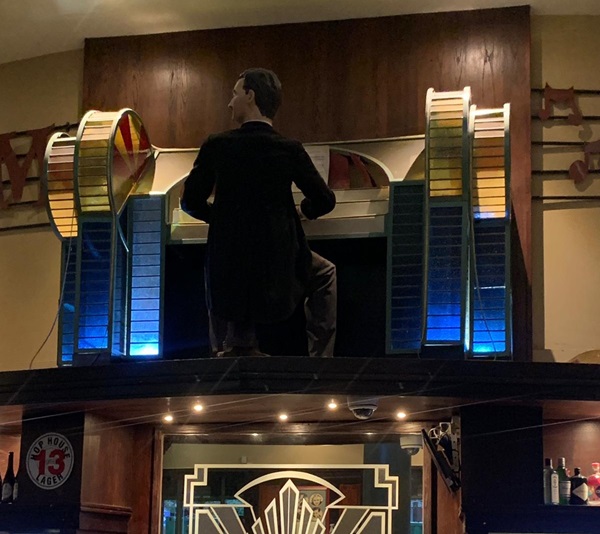
The text reads: In the far off days of the silent era, a pianist provided the musical sound track to accompany the flickering black and white film on the screen. In time, animated piano playing was replaced by the organ. By 1929, when the ‘talkies’ arrived, pianos had become obsolete.
By then cinema organs had become very grand. The best known – the ‘mighty Wurlitzer’ – was made in the USA by the company founded by the German-born instrument maker, Rudolf Wurlitzer.
These organs were decorated by bright lights, as was the console, and seat used by the organist. The whole ensemble rose majestically from the floor as the music started. Such was the impact that cinema organists, like Reginald Dixon, became celebrities in their own right.
Here in The Regal Moon the mighty Wurlitzer can be seen again, recalling the golden age of the silver screen.
External photograph of the building – main entrance.
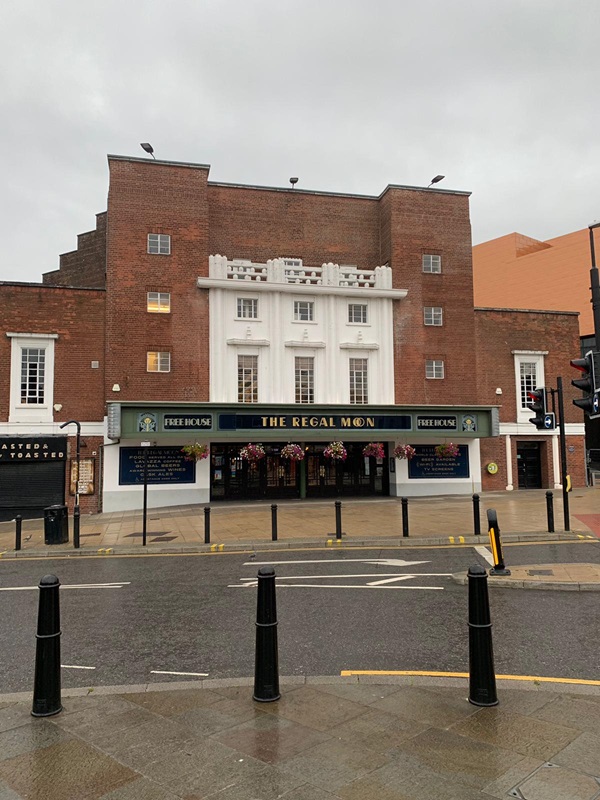
If you have information on the history of this pub, then we’d like you to share it with us. Please e-mail all information to: pubhistories@jdwetherspoon.co.uk